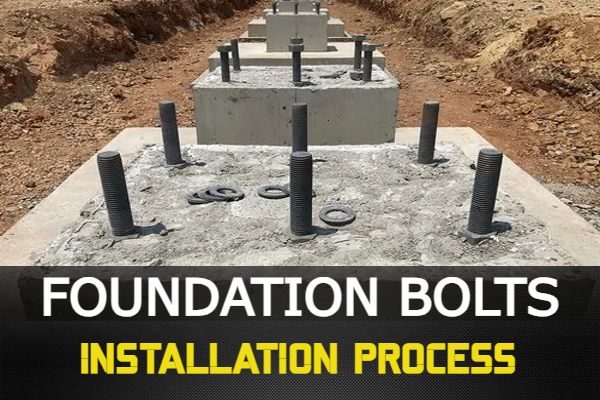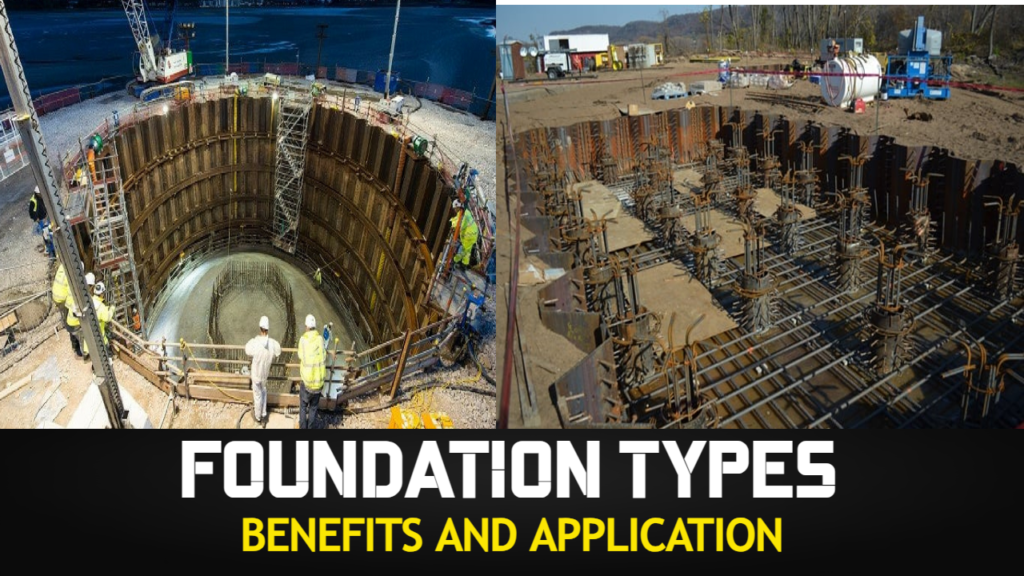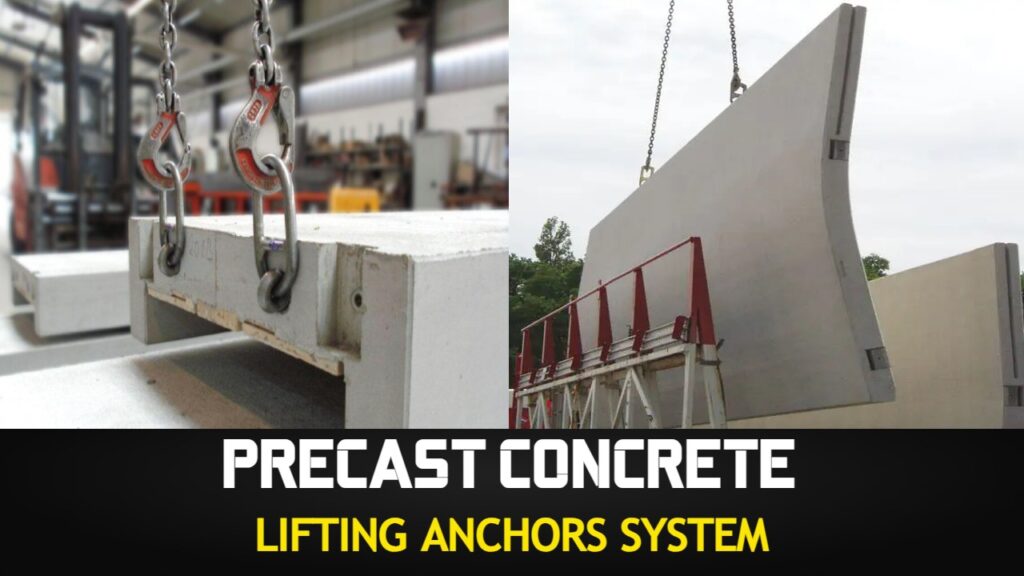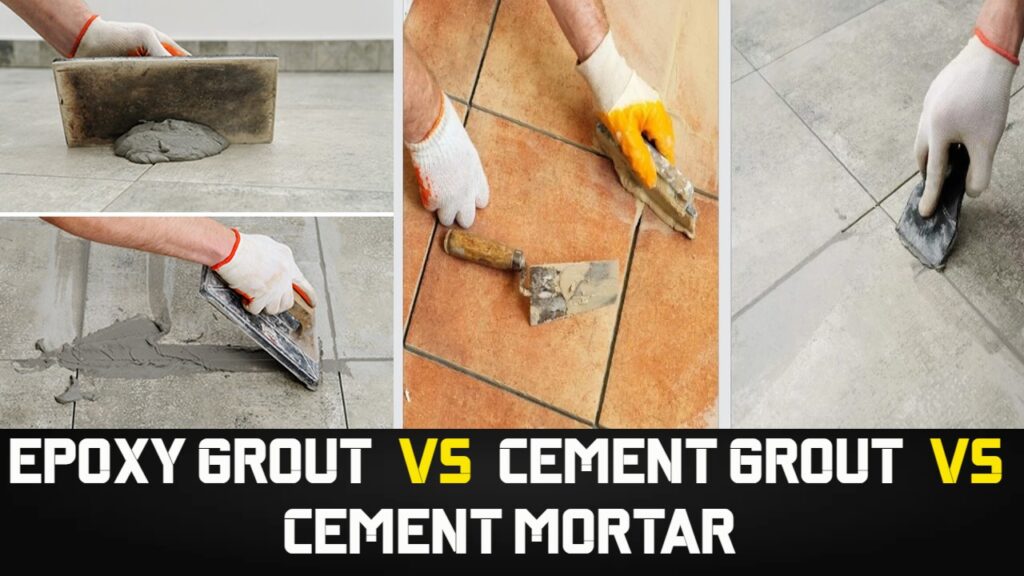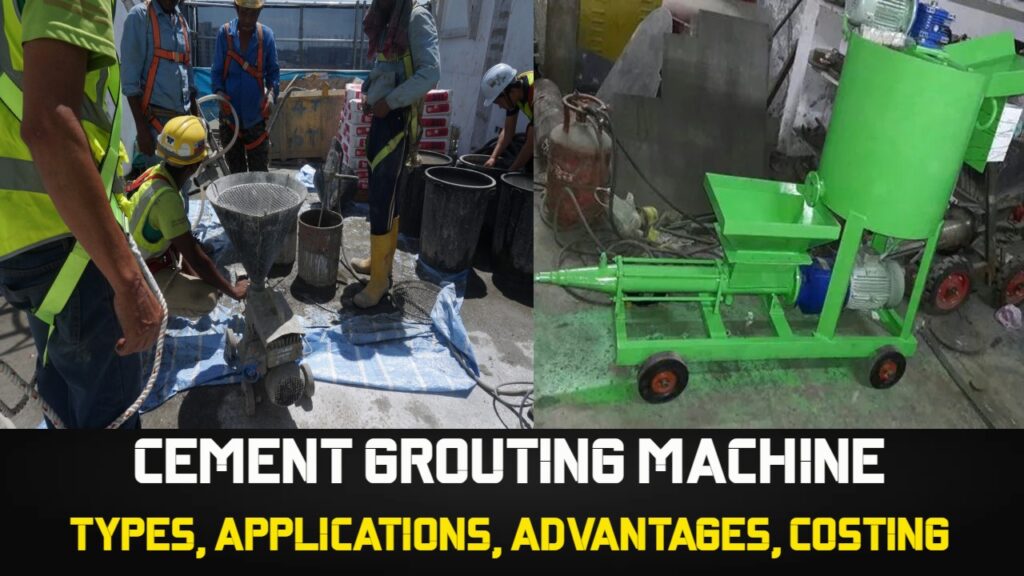Foundation Bolts are essential materials used in building projects to firmly tie buildings to the base. These bolts support the structure and guarantee its overall integrity. We will go into the realm of foundation bolts in this post, looking at their many varieties, uses, benefits, and drawbacks as well as how they are used in building.
Contents
- 1 What Are Foundation Bolts?
- 2 Types of Foundation Bolts
- 3 Applications of Foundation Bolts
- 4 Choosing the Right Foundation Bolts
- 5 Foundation Bolts Setting Process
- 6 Advantages of Foundation Bolts
- 7 Disadvantages of Foundation Bolts
- 8 Conclusion
- 9 Frequently Asked Questions – FAQs
- 9.1 What is the purpose of foundation bolts (F – Bolts)?
- 9.2 Are (F – Bolts) the same as anchor bolts?
- 9.3 Can (F – Bolts) be reused?
- 9.4 What are the different materials used for (F – Bolts)?
- 9.5 How are foundation F – Bolts tested for strength?
- 9.6 How deep should F – Bolts be embedded?
- 9.7 Can F – Bolts be used in all types of soil?
- 9.8 Are there any alternatives to F – Bolts?
- 9.9 Do F – Bolts require maintenance?
- 9.10 Where can I purchase F – Bolts?
What Are Foundation Bolts?
Anchor bolts and foundation bolts are two terms for the same type of fastener that are used to fasten structural parts to concrete foundations. These bolts are essential for giving a variety of constructions, such as buildings, bridges, towers, and equipment, stability, strength, and durability. Foundation bolts enhance structural integrity and prevent movement by securing the structure to the foundation.
Types of Foundation Bolts
There are several varieties of foundation bolts, each with a distinct function and a range of applications in building. Let’s examine a few of the most popular types:
L-Shaped Foundation Bolts:
L-shaped foundation bolts feature an L-shaped arrangement, as the name implies. These bolts have a threaded end that protrudes beyond the surface of the concrete and enables safe connection of structural components. They are frequently utilised as connections between concrete foundations and buildings, columns, and beams.
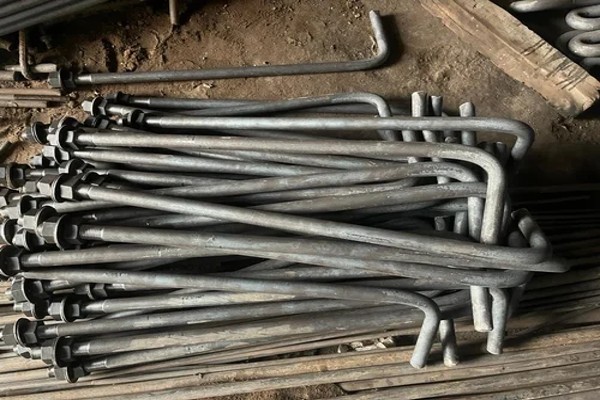
J-Shaped Foundation Bolts:
Another well-liked variety of foundation bolts is the J-bolt. They are made in the shape of a J, and the curved end improves anchoring. J-bolts are frequently used to fasten large pieces of equipment, machinery, and columns to concrete foundations.
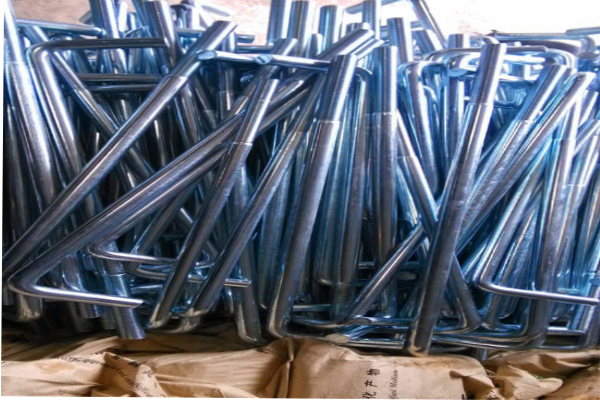
U-Shaped Foundation Bolts:
U-bolts feature threaded ends on both sides and a U-shaped profile. When things need to be fastened around a pipe or pole, these bolts are frequently employed in certain situations. Pipelines, electrical systems, and plumbing installations all often use U-bolts in their construction.
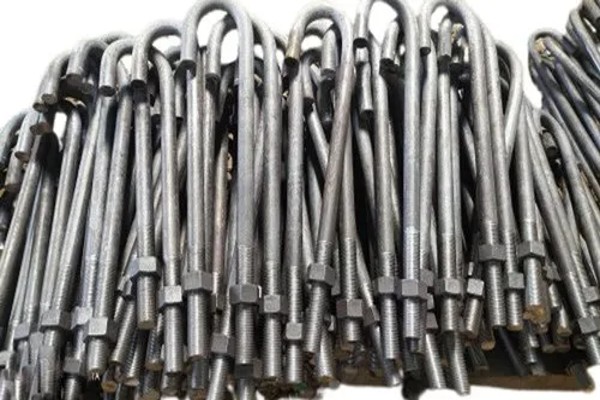
Plate Bolts:
Bolts with a flat plate affixed to the threaded end are referred to as plate bolts or bent bolts. They are perfect for fastening steel, concrete, or wooden plates to foundations because the plate provides a wider surface area for weight distribution.
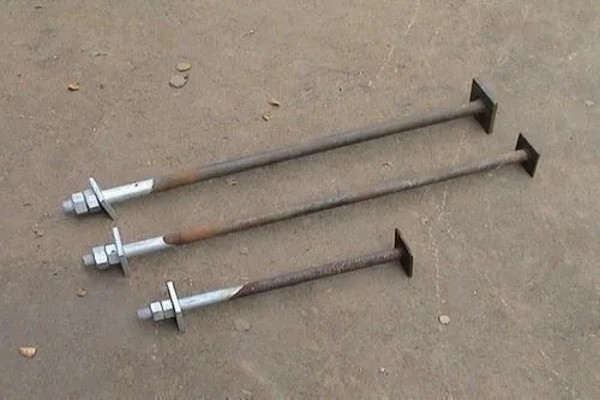
Expansion Bolts:
Wedge anchors, also known as expansion bolts, are intended to be used in softer or hollow materials like brick or concrete blocks. When tightened, these bolts expand into the material to provide a solid connection. Applications requiring a high level of pull-out resistance frequently employ expansion bolts.
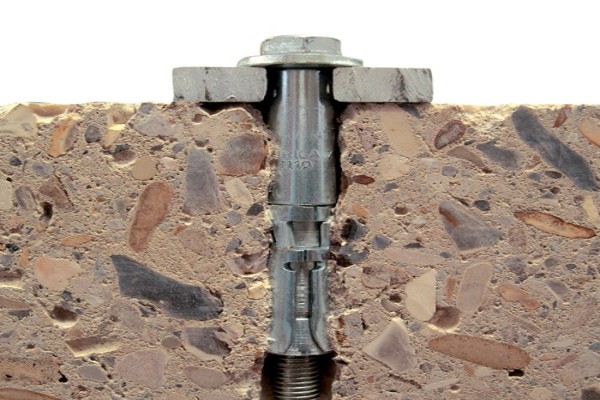
Also Read: Top 250 Civil Engineering Interview QnA : PDF Download
Also Read: How To Make BBS Of Pile Foundation
Applications of Foundation Bolts
Many different businesses and building projects make substantial use of foundation bolts. Let’s look at some of their most important applications:
Building Construction:
Building construction projects depend heavily on foundation bolts. The concrete foundation is secured with them using structural elements like walls, columns, beams, and trusses. The stability and strength needed to withstand outside forces like wind, earthquakes, and weights are provided by these bolts.
Infrastructure Development:
For the construction of infrastructure, such as bridges, tunnels, and roads, foundation bolts are essential. They aid in securing support columns, bridge piers, and other important components to the foundation, preserving the structural integrity and safety of these buildings.
Industrial Machinery:
Foundation bolts are used in industrial settings to fasten large machinery and equipment to the floor or concrete foundation. These bolts stop possible mishaps from happening by stopping vibrations, movement, and heavy machinery operation.
Electrical and Telecommunication Towers:
Towers for communications and electricity are frequently built using foundation bolts. They offer a stable link between the tower base and the foundation, assuring the tower structure’s stability and safety.
Marine Structures:
Marine building projects also make use of foundation bolts. They anchor offshore platforms, piers, and docks to the seabed while withstanding the effects of the tides, currents, and waves.
Choosing the Right Foundation Bolts
To maintain structural integrity and safety, it is essential to choose the proper foundation bolts for a certain application. When selecting foundation bolts, take into account the following factors:
Load Capacity:
Choose a bolt that can resist the maximum load that the bolt will need to support by calculating that load.
Material:
Take into account the corrosive substances and environmental factors in the application region. Pick a bolt made of a suitable material that offers sufficient protection against corrosion.
Length and Diameter:
Based on the thickness of the material being secured, choose the right bolt’s length and diameter.
Installation Method:
When choosing bolts, take into account the installation procedure and the installation strategy you want to use.
Also Read: Design and Construction Of Pile Foundations
Foundation Bolts Setting Process
A critical step in assuring the stability and integrity of buildings is installing foundation bolts. Whether it’s a building, piece of equipment, or infrastructure, properly fitted foundation bolts offer a strong link between the base and the superstructure. To ensure a solid and trustworthy foundation, we will walk you through the procedure of installing foundation bolts in this post.
Planning and Preparation:
A clear strategy must be in place before the foundation bolt placement procedure can begin. Based on the structural design and standards, this plan should specify the precise placement, spacing, and alignment of the bolts.
Marking the Bolt Locations:
Mark the precise positions where the foundation bolts will be put using the blueprint as a guide. Make sure the marks are precise and adhere to the structural specifications.
Drilling Holes
Drilling holes in the foundation is the next step after marking the bolt placements. The structural engineer’s criteria will determine the size and depth of the holes. For clean, accurate holes, use a high-quality drill and the proper drill bits.
Cleaning the Holes:
Cleaning the holes completely is essential after drilling them. Using compressed air or a hoover, clear the holes of any dirt, dust or loose particles. The foundation and the bolts will adhere and join properly after being cleaned in the holes.
Placing Anchor Templates:
To guarantee precise location of the foundation bolts, anchor templates or bolt cages may be utilised in specific situations. These cages or templates are inserted into the drilled holes to serve as a guide for attaching the bolts.
Inserting and Leveling the Bolts:
Place the foundation bolts into the holes with caution. Make sure the bolts are levelled and precisely aligned per the specified requirements. To attain the proper alignment, the bolts should be adjusted as needed.
Securing the Bolts:
It’s time to fasten the foundation bolts in place once they have been levelled and placed appropriately. Usually, to do this, grout or epoxy is poured into the holes near the bolts. By filling up the spaces between the bolts and the foundation, grout or epoxy creates a solid and reliable connection.
Curing and Testing:
As instructed by the manufacturer, let the epoxy or grout set. The bolts will solidly bind with the foundation throughout the curing process, guaranteeing optimum strength. The bolts may be checked for stability and load-bearing capability after curing to make sure they adhere to specifications.
Quality Inspection:
Conduct a comprehensive quality check following the completion of the required tests and curing of the foundation bolts. Make that the bolts are securely fastened, that they are within the required tolerances, and that they show no indications of corrosion.
Documentation and Record-Keeping:
The procedure of putting the foundation bolts must be accurately documented and recorded. Details like bolt positions, specs, test findings, and any modifications made during installation should all be included in this record. Keeping accurate records makes it possible to refer to them in the future and ensures that standards and rules are being followed.
It takes meticulous preparation, exact execution, and respect to industry standards to set foundation bolts. These methods will help you build a solid foundation that will support your constructions for many years to come.
Advantages of Foundation Bolts
- Enhanced Stability: By securely fastening buildings to the base, foundation bolts provide great stability.
- Flexibility: These fasteners provide constructions the flexibility and adaptability to be adjusted and realigned.
- Load Distribution: By equally distributing the weight over the foundation, F – Bolts eliminate concentrated stress spots.
- Increased Safety: Foundation bolts help to a safer working and living environment by stopping structural movement.
Disadvantages of Foundation Bolts
- Installation Complexity: It can be time-consuming and difficult to install foundation bolts with the required accuracy and skill.
- Limited Adjustability: Although foundation bolts provide some flexibility, significant alterations can necessitate further steps and structural changes.
Conclusion
Foundation bolts are crucial parts of many building projects because they give structures connected to concrete foundations stability and strength. In this article, we looked at the many kinds of F – Bolts, their uses, and the things to take into account when selecting the best bolt for a certain project. You may make more educated selections and guarantee the success of your building endeavours if you are aware of these factors.
To secure our built environment for many years to come, keep in mind that F – Bolts are more than simply fasteners.
With this extensive understanding about foundation bolts at your disposal, you are now equipped to choose the best foundation bolts for your building projects.
Frequently Asked Questions – FAQs
What is the purpose of foundation bolts (F – Bolts)?
Foundation bolts are used to securely anchor structures to the foundation, providing stability and preventing movement.
Are (F – Bolts) the same as anchor bolts?
Yes, (F – Bolts) and anchor bolts are interchangeable terms referring to the same type of bolts used for securing structures to foundations.
Can (F – Bolts) be reused?
In most cases, (F – Bolts) cannot be reused. Once they are embedded in the concrete or masonry, removing them without causing damage is challenging.
What are the different materials used for (F – Bolts)?
F – Bolts are typically made of steel, offering high strength and durability. Stainless steel and galvanized steel bolts provide corrosion resistance.
How are foundation F – Bolts tested for strength?
F – Bolts undergo various strength tests, including tension, shear, and bending tests, to ensure they meet the required load-bearing capacities.
How deep should F – Bolts be embedded?
The depth of embedding F – Bolts depends on factors such as the load requirements and the structural design. Generally, they are embedded at least 4-6 inches into the foundation.
Can F – Bolts be used in all types of soil?
F – Bolts can be used in most soil types, but the soil conditions must be assessed to ensure proper anchorage and stability.
Are there any alternatives to F – Bolts?
Alternative methods, such as chemical anchors or epoxy anchors, can be used in situations where traditional F – Bolts are not feasible or practical.
Do F – Bolts require maintenance?
F – Bolts do not typically require specific maintenance. However, regular inspections should be conducted to ensure they are in good condition and properly secured.
Where can I purchase F – Bolts?
F – Bolts are available at hardware stores, construction supply companies, and online retailers specializing in construction materials.
